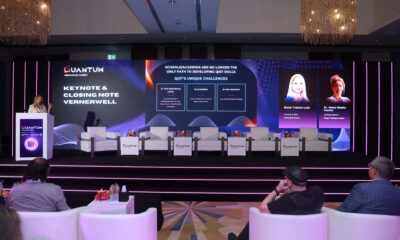News
Grok’s Image Generator Sparks AI Content Regulation Debate
Elon Musk’s new AI tool faces considerable backlash for its unchecked generation of controversial content.

Grok, the latest artificial intelligence chatbot created by Elon Musk’s xAI, is making headlines with its innovative and controversial image generation features. Like other AI tools, Grok allows users to create images from prompts but lacks the strict guidelines usually seen in those other models. This freedom has sparked significant debate and concern, particularly regarding the potential for misuse in generating deep fakes and other inappropriate content.
Users on social media platform X have reported instances of generating controversial content, such as deep fakes involving famous politicians and celebrities. While some users appreciate the creativity and humor enabled by Grok’s capabilities, others are deeply concerned about the ethical implications and potential for misuse.
Unlike established AI tools like OpenAI’s ChatGPT, which typically refuse to create violent, sexual, or otherwise inappropriate content, Grok has shown a willingness to produce politically sensitive and even sexually explicit images, suggesting a distinct lack of moderation.
Although Grok claims to restrict the creation of harmful content, such as pornographic images or deceptive media, evidence shows otherwise. Users have shared examples of prompts resulting in alarming images, such as infamous politicians holding weapons or engaging in illegal activities.
The tool has drawn sharp criticism from ethicists and technology analysts, with Alejandra Caraballo, a civil rights attorney, describing Grok as “one of the most reckless and irresponsible AI implementations I’ve ever seen” highlighting widespread concern about its potential impact.
Also Read: Top Free AI Chatbots Available In The Middle East
So far, Elon Musk has embraced the enthusiasm and controversy surrounding Grok, calling it “the most fun AI in the world” on his social media platform. His lighthearted response to Grok’s controversial aspects has only deepened doubts and skepticism regarding the future of AI-driven content creation.
The ongoing calls for moderation reflect broader societal concerns about technology’s role in shaping public narratives and individual perceptions. This issue gains even greater urgency with upcoming elections, emphasizing the potential influence of AI-generated content on public opinion.
Each innovative creation by Grok invites the world to reconsider its comfort levels with the expanding reach of technology. The debate between enforcing strict controls and fostering creativity epitomizes the current challenges faced in AI development.
News
Alienware Just Announced Six New Gaming Monitors
The new models include three QD-OLED and three budget-friendly QHD options, expanding the company’s lineup for all gamers.

Alienware has just updated its gaming monitor lineup with six new additions, including the highly anticipated Alienware 27 4K QD-OLED Monitor. The latest wave of releases is set to reach more gamers than ever, offering high-end QD-OLED displays alongside more budget-friendly options.
The latest displays clearly show that the company is doubling down on QD-OLED with three new models sporting the technology. A redesigned Alienware 34 Ultra-Wide QD-OLED Monitor is also making a return, further refining what is already a fan-favorite display.
A Unified Design: The AW30 Aesthetic
All six monitors feature Alienware’s new AW30 design language, first introduced at CES. The AW30 aesthetic brings a futuristic, minimalist look that unites the entire lineup under a cohesive visual identity.
Pushing QD-OLED Even Further
The refreshed Alienware 34 Ultra-Wide QD-OLED Monitor (AW3425DW) builds on its predecessor’s success with a 240Hz refresh rate (up from 175Hz) and HDMI 2.1 FRL support. It also gains G-SYNC Compatible certification alongside AMD FreeSync Premium Pro and VESA AdaptiveSync, ensuring ultra-smooth performance. With a WQHD (3440×1440) resolution and an 1800R curve, this display enhances immersion for both gaming and cinematic experiences.
For those who crave speed, the Alienware 27 280Hz QD-OLED Monitor (AW2725D) pairs a high refresh rate with QHD resolution, balancing sharp visuals with ultra-smooth gameplay. Meanwhile, the Alienware 27 4K QD-OLED Monitor (AW2725Q) delivers stunning clarity with an industry-leading pixel density of 166 PPI, making it the sharpest OLED or QD-OLED monitor available.
Also Read: Infinite Reality Acquires Napster In $207 Million Deal
Worried about OLED burn-in? Alienware’s entire QD-OLED lineup comes with a three-year limited warranty covering burn-in concerns, offering peace of mind for gamers investing in these high-end displays.
Bringing QHD To A Wider Audience
Alongside QD-OLED, Alienware is also releasing three new QHD gaming monitors aimed at more price-conscious gamers. The Alienware 34 Gaming Monitor (AW3425DWM), Alienware 32 Gaming Monitor (AW3225DM), and Alienware 27 Gaming Monitor (AW2725DM) provide a range of sizes and formats to suit different preferences:
- The Alienware 34 Gaming Monitor (AW3425DWM): An ultrawide (WQHD) option for a panoramic, immersive experience.
- The Alienware 32 Gaming Monitor (AW3225DM): A standard 16:9 panel for a traditional but expansive desktop setup.
- The Alienware 27 Gaming Monitor (AW2725DM): A 27” display offering the same performance in a more compact form factor.
All three gaming monitors feature a fast 180 Hz refresh rate, a 1ms gray-to-gray response time, and support for NVIDIA G-SYNC, AMD FreeSync, and VESA AdaptiveSync to eliminate screen tearing. Additionally, with 95% DCI-P3 color coverage and VESA DisplayHDR400 certification, these displays deliver vibrant colors and high dynamic range for lifelike visuals.

























